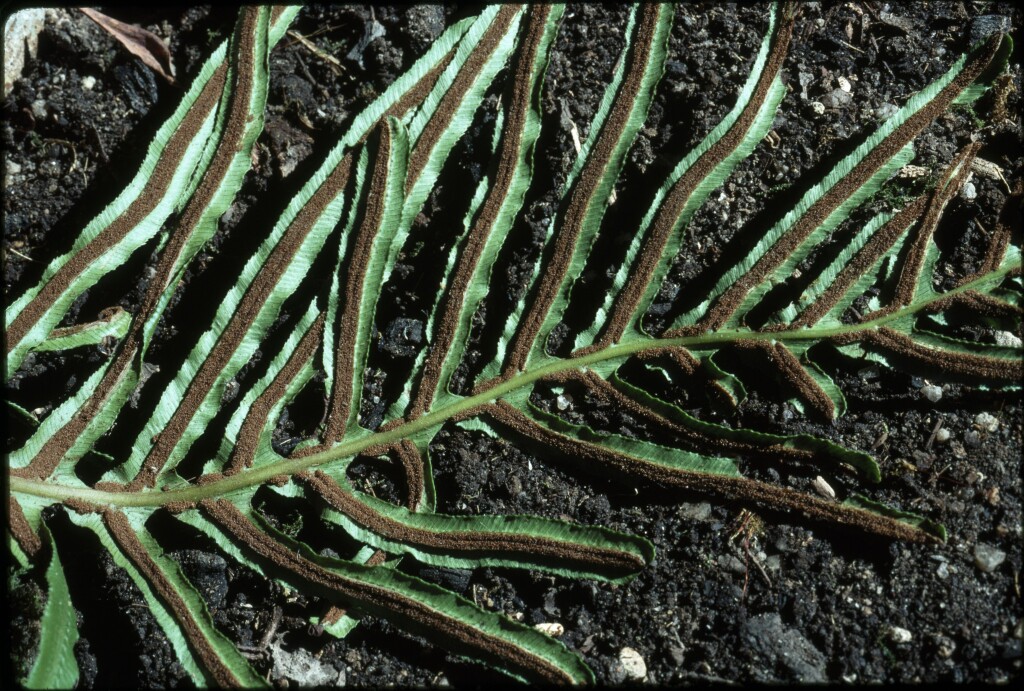Blechnum cartilagineum
Sw. Gristle-fernRhizome semi-erect to horizontal, often branched. Fronds clustered towards tip of rhizome, erect, 35–150 cm tall, somewhat harsh; sterile and fertile fronds similar; young fronds commonly tinged dusky-pink, bronze or lime green. Stipe long, grooved, rough, pale brown, darker towards scaly base; scales black, shiny, coarse, long, with twisted tips, dense on stipes and rachises of young fronds, sparse to absent on mature fronds, growing from tubercles which harden. Lamina narrowly triangular to oblong, once pinnate, mid-green. Pinnae sessile, attached to rachis by abruptly widened base, alternate, close-set, oblong to linear, 3–15 cm long, decreasing only slightly in length towards base, margins finely toothed, tips tapering; lower pinna-pairs separate, the lowest bent downwards. Sori continuous and linear on either side of midvein, lamina continuing beyond sori.
GleP, VVP, GipP, OtP, WaP, CVU, NIS, EGL, EGU, WPro, HSF, HNF, OtR, Strz, MonT, HFE, VAlp. Also Qld, NSW, Tas. Philippines. Occurs commonly at forest margins or in canopy breaks, including swampy areas such as stream banks, open gullies and hillsides.
Entwisle, T.J. (1994). Ferns and allied plants (Psilophyta, Lycopodiophyta, Polypodiophyta). In: Walsh, N.G.; Entwisle, T.J., Flora of Victoria Vol. 2, Ferns and Allied Plants, Conifers and Monocotyledons, pp. 13–111. Inkata Press, Melbourne.
 Spinning
Spinning

